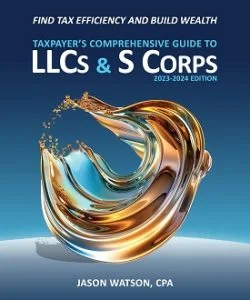
Business Advisory Services
Everything you need to help you launch your new business entity from business entity selection to multiple-entity business structures.
Hey - Our site just had a makeover and we are sorting through the hiccups!
Hey - Our site just had a makeover and we are sorting through the hiccups!

Everything you need to help you launch your new business entity from business entity selection to multiple-entity business structures.

Designed for rental property owners where WCG CPAs & Advisors supports you as your real estate CPA.

Everything you need from tax return preparation for your small business to your rental to your corporation is here.

WCG’s primary objective is to help you to feel comfortable about engaging with us
Table Of Contents
By Jason Watson, CPA
Posted Monday, December 30, 2024
Another twist. Let’s say you have a side business and a regular W-2 job where you max out your deferrals into the 401k plan. You cannot make employee deferrals to your side business solo 401k plan since you are collectively limited to $23,500 (for the 2025 tax year) or $31,000 with catch-up, but your business can make a discretionary non-elective contribution up to $70,000 or $77,500 with catch-up (for the 2025 tax year).
Here is the word for word example from the IRS using 2016 limits of $18,000 as an example (occasionally they illustrate things well)-
Greg, 46, is employed by an employer with a 401(k) plan and he also works as an independent contractor for an unrelated business. Greg sets up a solo 401(k) plan for his independent contracting business. Greg contributes the maximum amount to his employer’s 401(k) plan for 2016, $18,000. Greg would also like to contribute the maximum amount to his solo 401(k) plan. He is not able to make further elective deferrals to his solo 401(k) plan because he has already contributed his personal maximum, $18,000.
He has enough earned income from his business to contribute the overall maximum for the year, $53,000. Greg can make a non-elective contribution of $53,000 to his solo 401(k) plan. This limit is not reduced by the elective deferrals under his employer’s plan because the limit on annual additions applies to each plan separately.
Good ol’ Greg. From the employer or business perspective, a discretionary non-elective contribution is in contrast to a matching contribution. This means that a contribution can be without the employee making a deferral. This is key since in the tidy IRS example above, Greg has max’d out his deferrals at his regular job, so he cannot make additional deferrals with his side business. However, the business can make a non-elective contribution.
A non-elective contribution means that the business’s contribution is not dependent on the employee’s deferral. Seems counter-intuitive. In other words, you do not put anything into the 401k plan, but your business can contribute up to 20% of your income from the business as a garden variety LLC (or 25% of your W-2 from your business if electing S Corporation status). These are also referred to as discretionary contributions.
Sidebar: The phrase profit-sharing contributions is sometimes used as well. However, this is like interchanging 401k and IRA. Technically, a profit-sharing plan is different than a 401k plan, and it can either be standalone or deployed in combination with a 401k plan.
Therefore, if a company has excess profits (cash) and wants to make a contribution to the 401k plan, these are considered discretionary non-elective contributions and not profit-sharing contributions. This is because a 401k plan is being used and not a profit-sharing plan. Our apologies for splitting hairs and getting all nerdy on the nomenclature.
In summary, the $23,500 (for the 2025 tax year) limit is your limit as a person. But each 401k plan has a limit of $70,000 (see the last line of the IRS example on the previous page using 2016’s limits) which can add a lot of muscle to your self-employed retirement plan.
No, you cannot add your W-2s together (main job and side job) and use that for the basis of your side job / business employer contribution. That would be nice though.
Warning! Each year a handful of small business owners neglect to let us know they picked up W-2 income on the side, and they also forget to inform us that they contributed to their “side W-2 gig’s” 401k plan. Yes, we ask. We ask often. Therefore, keep in mind that the $23,500 deferral limit into a 401k plan (for the 2025 tax year) is for all plans, combined.
 This KB article is an excerpt from our 420+ page book (some picture pages, but no scatch and sniff) which is available in paperback from Amazon, as an eBook for Kindle and as a PDF from ClickBank. We used to publish with iTunes and Nook, but keeping up with two different formats was brutal. You can cruise through these KB articles online, click on the fancy buttons below or visit our webpage which provides more information.
This KB article is an excerpt from our 420+ page book (some picture pages, but no scatch and sniff) which is available in paperback from Amazon, as an eBook for Kindle and as a PDF from ClickBank. We used to publish with iTunes and Nook, but keeping up with two different formats was brutal. You can cruise through these KB articles online, click on the fancy buttons below or visit our webpage which provides more information.
 |
 |
 |
| $49.95 | $39.95 | $29.95 |
Please use the form below to tell us a little about yourself, and what you have going on with your small business or 1099 contractor gig. WCG CPAs & Advisors are small business CPAs, tax professionals and consultants, and we look forward to talking to you!
The tax advisors, business consultants and rental property experts at WCG CPAs & Advisors are not salespeople; we are not putting lipstick on a pig expecting you to love it. Our job remains being professionally detached, giving you information and letting you decide within our ethical guidelines and your risk profiles.
We see far too many crazy schemes and half-baked ideas from attorneys and wealth managers. In some cases, they are good ideas. In most cases, all the entities, layering and mixed ownership is only the illusion of precision. As Chris Rock says, just because you can drive your car with your feet doesn’t make it a good idea. In other words, let’s not automatically convert “you can” into “you must.”
Let’s chat so you can be smart about it.
We typically schedule a 20-minute complimentary quick chat with one of our Partners or our amazing Senior Tax Professionals to determine if we are a good fit for each other, and how an engagement with our team looks. Tax returns only? Business advisory? Tax strategy and planning? Rental property support?

Taxes can be tricky. Chat with a WCG human now and get questions answered.

Everything you need to help you launch your new business entity from business entity selection to multiple-entity business structures.

Designed for rental property owners where WCG CPAs & Advisors supports you as your real estate CPA.

Everything you need from tax return preparation for your small business to your rental to your corporation is here.

WCG’s primary objective is to help you to feel comfortable about engaging with us
